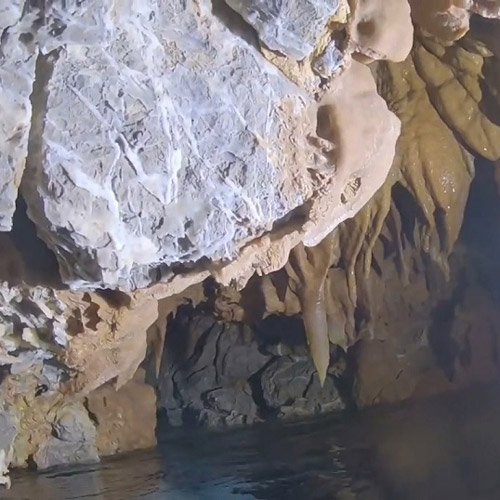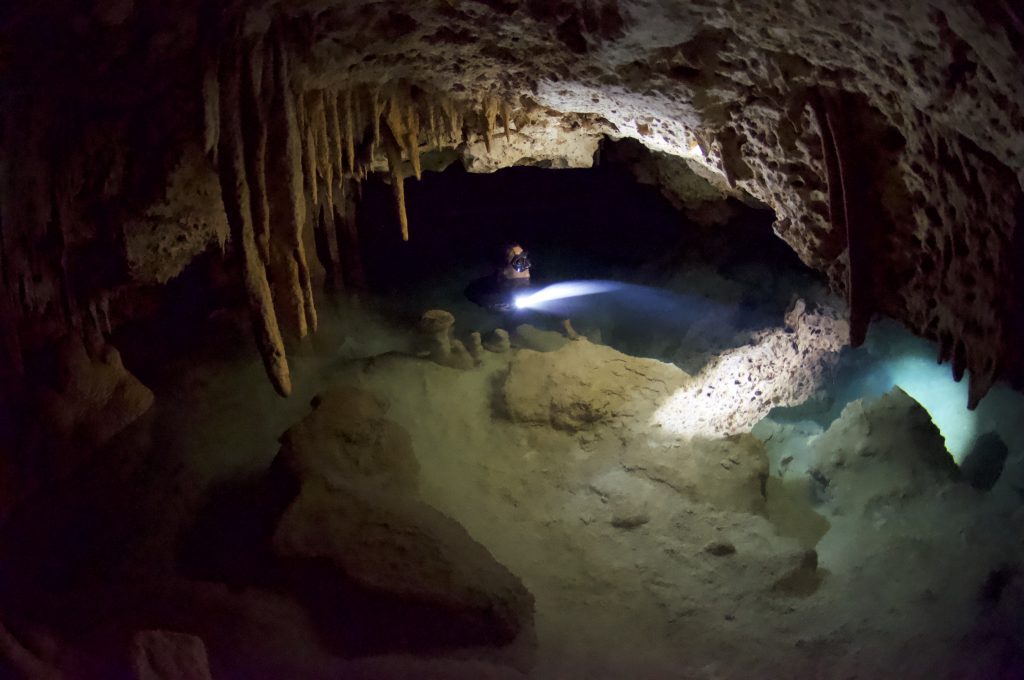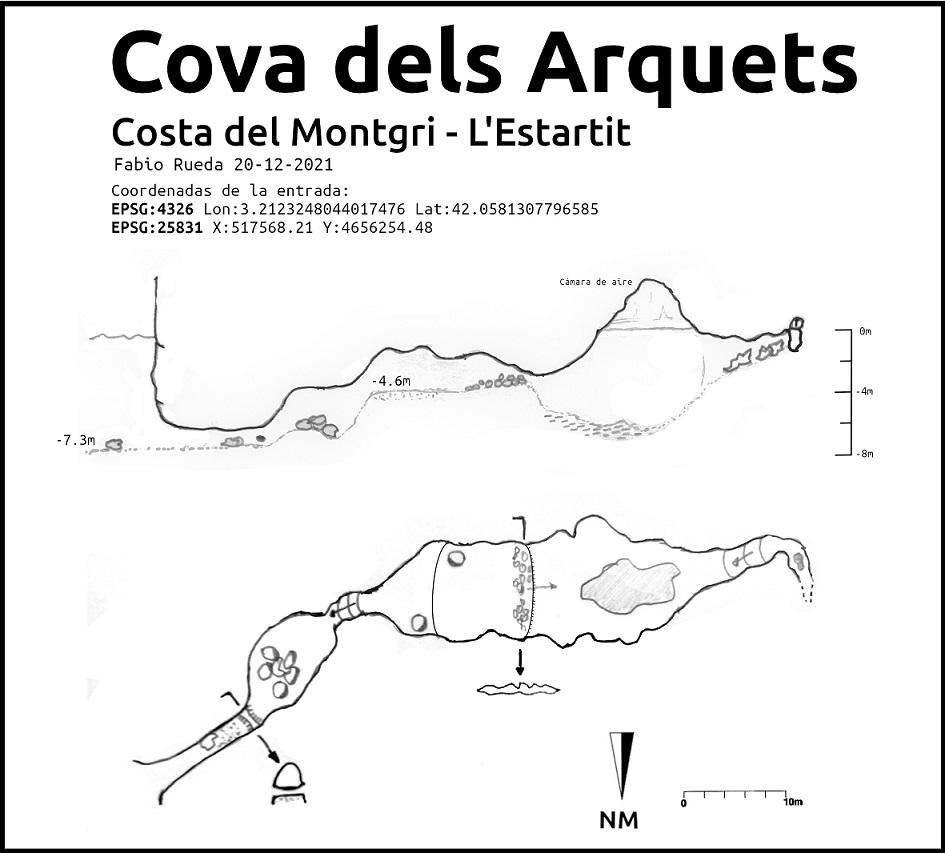Trapped in Darkness: The Harrowing Tale of the Cova dels Arquets Cave


| Incident Location | Diver Full Names |
|---|---|
| Spain, Cova dels Arquets | Ricard, Denisio |
Imagine the bone-chilling realization of being trapped in an unknown cave where darkness and cold seem to be the only constant variables. A place where solace is but a distant memory, replaced only by the lifeless body of a once cherished friend.
In the breathtaking region of the Cova dels Arquets in Spain, an unforeseen tragedy began to unfold approximately a decade ago. Ricard and Denisio, two fearless souls bound by a shared passion for exploration, embarked on their most challenging adventure yet, oblivious to the impending dangers that lay ahead.
The Cave of Cova dels Arquets
This is their story, and the code to Arquet’s disaster of 2014. Approximately 80 meters or 262 feet in length, Cova desl Arquets is a limestone cave located in the Morning area. It is a popular destination among underwater photography enthusiasts and attracts numerous divers due to its accessibility and good visibility, making it a common dive site for locals.
From Leicester, you can go by car to the place of De Molinier. From there, it is necessary to get into the water and swim in a north direction following the wall of the coast.
Once you arrive at Ponte del Arquets, you will have to start the dive and continue on for another 50 to 60 meters, following the bottom marine until you find the entrance mouth. The entrance descends approximately 10 meters or 33 feet beneath the surface of the sea.
The mouth is an opening of about 2.5 meters or eight feet that gives passage to an ascending conduit with the ground filled with stones and going up to 4 meters or 13 feet. The cave extends to a depth of approximately 40 meters or 131 feet and is usually considered manageable for experienced divers.
The Obscure Opening
Despite its reputation as a relatively straightforward dive, experts studying the cave have discovered an intriguing aspect towards its end. There is a smaller opening leading to a muddy cavity. Interestingly, there had been no known record of anyone successfully passing through this opening due to its obscurity and the potential absence of visibility depending on sea conditions.
For a considerable period, Cova dels Arquets remained a well-kept secret among a select group of divers who frequented the coast of Lisa state.
Setting Sail and the Allure of Captain Labari
However, the cave’s existence couldn’t stay hidden for long as the sun illuminated the azure waters, casting a shimmering reflection upon their adventurous spirits. A group of four friends set sail from the port of Lesostret on that fateful morning of Saturday, July 19th, 2014.
Their camaraderie and love for exploration propelled them forward towards the mesmerizing allure of Captain Labari, a remarkable cliff formation formed during the separation of the Medese islands from the mainland thousands of years ago.
The Dive Begins
Hidden beneath the surface, an intricate maze of underwater cavities awaited their discovery, shaped by the same tectonic forces that sculpted the majestic cliff. Undaunted by the potential perils that lay ahead, three of the friends, Ricard, Denisio, and a companion whose identity remains unspoken, excitedly geared up in their diving equipment and prepared to plunge into the mysteries of the submerged realm.
Meanwhile, the fourth member of the group stood watchfully on the surface, shouldering the crucial responsibility of ensuring their safety during this daring expedition.
Exploring the Underwater Caves
Continuing their dive without the aid of ropes or any visible markers, the trio courageously entered and exited several underwater caves. Each cave held its own unique beauty, adorned with intricately patterned stones and a diverse array of marine life.
Among their discoveries, they found themselves facing the entrance of the Cova dels Arquets, commonly known as the Cave of the Lobsters. The entrance descended approximately 10 meters or 33 feet beneath the surface of the sea, presenting them with an intriguing opportunity for further exploration.
Tragedy Strikes
With the artificial light of their flashlights, Ricard, Denisio, and their buddy diver traveled 45 meters or 148 feet underground and underwater. This stretch of rock in the Arquets cave is ideal for recruiting lobsters, hence its second name. But when the rock ends, the grotto changes texture.
The rock gives way, from which point clay and narrow unexplored territory begins. Their buddy diver began to feel overwhelmed by fear. Through a series of gestures, he communicated his decision to return to the surface. Respecting his choice, Ricard and Denisio shared a mutual understanding and decided to carry on without him—a mistake that would prove fatal.
Lost in Darkness
Ricard and Denisio swam onward, covering an additional distance of 35 meters or 115 feet along the seabed. With each kick of their flippers, their visibility seemed to diminish. They pressed on regardless, determined to explore further.
As they reached a distance of 80 meters or 262 feet, the duo made the mutual decision that it was time to conclude their dive. However, an unforeseen challenge awaited them. The silt in the water had caused them to lose their sense of direction entirely. Their movements across the seabed stirred up the sediment, transforming the water into a murky haze.
Desperate Predicament
Unbeknownst to them, their progress had inadvertently created a dense cloud of mud-filled water, effectively erecting a disorienting black wall behind them. The path they had taken was now obscured, shrouded in an impenetrable darkness devoid of any visual markers or lines that guide them.
Ricard and Denisio found themselves in a desperate predicament with no clear path to escape. The weight of their situation intensified as they realized their limited air supply was reaching critical levels within their diving tanks. The search for an exit became an agonizing race against time.
A Glimmer of Hope
A glimmer of hope emerged as they caught sight of a hairline crack in the ceiling above. The faintest hint of light seeped through, beckoning them to investigate further. Fueled by a combination of desperation and determination, they swam toward the crack, their hearts pounding with anticipation.
In a daring act of desperation, Ricard and Denisio made a risky gamble, deciding to squeeze through the unknown crack, oblivious to where it would lead them.
The Miraculous Escape
The narrow passage pressed tightly against their chests and backs as they advanced. With each inch gained, uncertainty loomed, and the possibility of a dead end that would seal their fate by suffocation weighed heavily upon them.
The passage went diagonally upwards towards the surface and was 80 meters or 262 feet from the cave entrance. It led them to a subterranean lake, a bubble of breathable air, a pocket of oxygen that seemed to have been waiting for them for centuries.

The pair removed their equipment and, with their heads out of the water and their bodies partially submerged, Ricard and Denisio felt as if they had just cheated certain death. The pair seized the opportunity to commemorate the miraculous escape, capturing the incredible turn of events in a couple of photographs.
One image showed Ricard, his face beaming with a mix of relief and exhilaration. The other portrayed Denisio, his expression mirroring a mixture of gratitude and disbelief. They found solace in a renewed sense of humor in the unexpected surprise that awaited the Geas rescue divers who would discover them alive upon their recovery.
Rescue and Aftermath
As hours ticked by, concern grew among Ricard and Denisio’s companions on the surface. The Geas of Liscarted was on duty that morning, providing security for open water swimmers participating in a popular crossing in Capta Cruise. Around 11 o’clock in the morning, a distress call reached the team from Ricard and Denisio’s two worried friends. Corporal Fernando Aguirre, the Geas group leader, swiftly organized the team for an immediate return trip to the dive site before nightfall.
Although they held little hope, they understood that the air in Ricard and Denisio’s cylinders would have likely depleted by now, leading to a tragic drowning. Unbeknownst to those on the surface, Ricard and Denisio remained trapped within the air pocket they had discovered.
The bubble, measuring approximately 30 square meters with a height of 1.5 meters, seemed like a sanctuary in the midst of their ordeal. It contained a substantial amount of air, estimated to be around 35,000 liters. However, their prolonged presence within the confined space had dire consequences.
The act of breathing, vital as it was, had gradually filled the limited airspace with carbon dioxide. Unbeknownst to them, this invisible gas was silently and insidiously poisoning their bodies, jeopardizing their survival in the very refuge they had sought.
As time wore on, the rising levels of CO2 within the air pocket began to take its toll. The once life-giving oxygen was gradually being replaced by this toxic byproduct of breathing. Ricard and Denisio, now realizing the impending danger, felt the insidious effects of the poisonous gas infiltrating their bodies, impairing their cognitive and physical functions.
As the relentless passing of time wore on, the plight of Ricard and Denisio grew increasingly dire. Hydration, disorientation, and hypothermia took a heavy toll on their weakened bodies, exacerbating their already challenging circumstances.
However, it was Ricard who bore the brunt of the carbon dioxide effects, experiencing its debilitating impact more severely than Denisio. Their once vibrant spirits had all been extinguished, replaced by a somber resignation to their grim fate. In their struggle to stay afloat, Ricard’s strength waned further, making it increasingly difficult for him to keep his head above the water’s surface.
Denisio cast a worried glance toward Ricard, only to witness the sight of his body, almost lifeless, slipping into the water. A surge of adrenaline coursed through Denisio’s veins as he summoned every ounce of his remaining strength. With a valiant effort, he managed to seize Ricard and pull his head back above the water’s surface, fighting against the inevitable doom that loomed over them.
As five more excruciating hours crawled by, the relentless toll on Ricard and Denisio’s bodies reached a devastating climax. With the air in their tanks dwindled to nothing and the water still silt-laden and suffocatingly cold, the air pocket, the very element that once sustained them, was now becoming their silent executioner. Cognitive and physical paralysis gripped them, rendering them helpless in the face of their impending doom.
Ricard’s weakened body began slipping into the water once more, no longer under his control. In a heart-wrenching moment of despair, Denisio, himself drained of every ounce of strength, could do nothing but watch as the lifeless body of his friend submerged into the depths below.
With a heavy heart, Denisio found himself alone, his own survival hanging by a thread. He had exhausted every last reserve of energy, leaving him with no means to keep his head above water any longer, and he was now certain that he would die as well.
The Rescue Effort
As the clock struck five in the evening, a Geas team, led by Corporal Aguir, entered the cave accompanied by a fellow diver. With unwavering determination, they ventured into the depths of the cave, braving the challenging and rocky terrain that lay before them. Swimming a distance of 45 meters or 148 feet, they pushed forward, propelled by a relentless pursuit to locate Ricard and Denisio.
Their progress, however, was abruptly impeded as they encountered the murky aftermath of the frantic disturbance caused by the trapped victims. Swirling sediment obscured their vision, causing an eerie veil of uncertainty, preventing them from advancing further or discerning the path that Ricard and Denisio had taken in their desperate escape.
The Corporal activated the Guardia Civil’s National Speleo Diving Group, in preparation for the rescue. They called biologists, diving centers, underwater photographers, and fishermen. In the last few hours, none of them knew much about the cave.
The only one who provided a basic topography was a biologist, a precarious map that ended in the muddy terrain that Aguir had just entered. The search was reactivated on Sunday, and by this time, no one believed in the possibility of finding them alive.
Coming from Valladolid, Olesa de Montserrat, Cartagena, and Barcelona, the specialists activated by the Corporal arrived at L’Esquirol in the early hours of the morning. The incident was now public, and the second day was followed by dozens of journalists. From the port, they clung to the line that Aguir and his partner had set up the day before.
The first two divers of the morning reached the clay area. Visibility was good again; during the night, the mud had settled, and the Fisher through which Ricard and Denisio had fled was visible. It seemed plausible that Ricard and Denisio had slipped through there.
The diver who first entered the Fisher would declare in the subsequent report that, after a few minutes, and given the narrowness, he tried to turn around to go back but realized that it was impossible, and that he could only go forward. He did so and finally reached the bubble that Ricard and Denisio had found.
The Civil Guard emerged in that subway lake, swept the cavity with his flashlight, and discovered Ricard’s lifeless body floating inside his neoprene, and Denisio against the wall, clinging to the rock with both hands, with half his body out of the water, emitting a moan of agony through which he exhaled the last breath he had left.
A Miraculous Survivor
Completely stunned, Denisio was disoriented, dehydrated, hypothermic, and breathing heavily. He would not even allow himself to be fitted with air equipment; the policeman had to give him oxygen by emptying several bottles in front of his face that they had brought on various trips.
Afterwards, they gave him isotonic drinks. The most difficult part remained convincing him to follow them, to put his head back under the water and let them guide him. But Denisio, who did not understand anything, who did not know where he was, who did not know his rescuers, refused to collaborate.
Aguir took the delicate decision to convince one of Denisio’s diving friends to agree to go into the cave and reach the bubble, following the line installation. It was a plan that consisted of seducing Denisio with a familiar face, and it succeeded in defusing the only alternative they had left.
Sedating Denisio on Sunday afternoon, Denisio, encouraged by his friend and escorted by the Geas, resurfaced. After 24 hours, he became the first diver to survive such an accident in Spain. But Ricard’s body was later recovered.
The Investigation
Corporal Aguir conducted a three-year investigation into these events and concluded that Ricard had died as a result of hypercapnia. Hypercapnia, also known as hypercarbia, is a condition that occurs when a person has too much carbon dioxide in their bloodstream, which in severe cases causes death, as seen in Ricard’s case.
The report also specifies that both divers did not have the necessary training and took too many risks, especially because they were diving without thread installation.
When it was published that there was an investigation underway, contemplating all the hypotheses as is done whenever someone dies, rumors spread about the responsibility of Denisio in what happened or about a hypothetical lack of help to Ricard.
However, the report ended up reflecting that Denisio tried twice to save Ricard, dragging him back into the Fisher when he saw him vanish. These two unsuccessful attempts were recorded on their dive computers.
Denisio did not want to make statements to El Periódico, as those involved reflect on the haunting events that unfolded in the Cova dels Arqueta in 2014. A shiver runs down their spines, reminding them of the chilling desolation and profound sense of isolation that gripped Ricard and Denisio within the unknown cave. It is a testament to the fragility of life and the fine line between triumph and tragedy, and a permanent reminder for cave divers on the importance of using a rope to be able to return.
The harrowing experience of Ricard and Denisio serves as a solemn reminder of the risks inherent in exploring the unknown depths of underwater caves. May their story inspire future divers to prioritize safety above all else, ensuring that triumph, rather than tragedy, prevails in their underwater endeavors.

FAQ
Cova Dels Arquets cave is located in the beautiful region of Catalonia, Spain.
No, Cova Dels Arquets cave is not open to the public for safety reasons.
No, guided tours are not available for Cova Dels Arquets cave at the moment.
Yes, there are several other caves in the area, such as Cova de Sant Ignasi and Cova dels Xorros.
Yes, it is essential to check local regulations and obtain necessary permits before visiting any caves in Catalonia.
